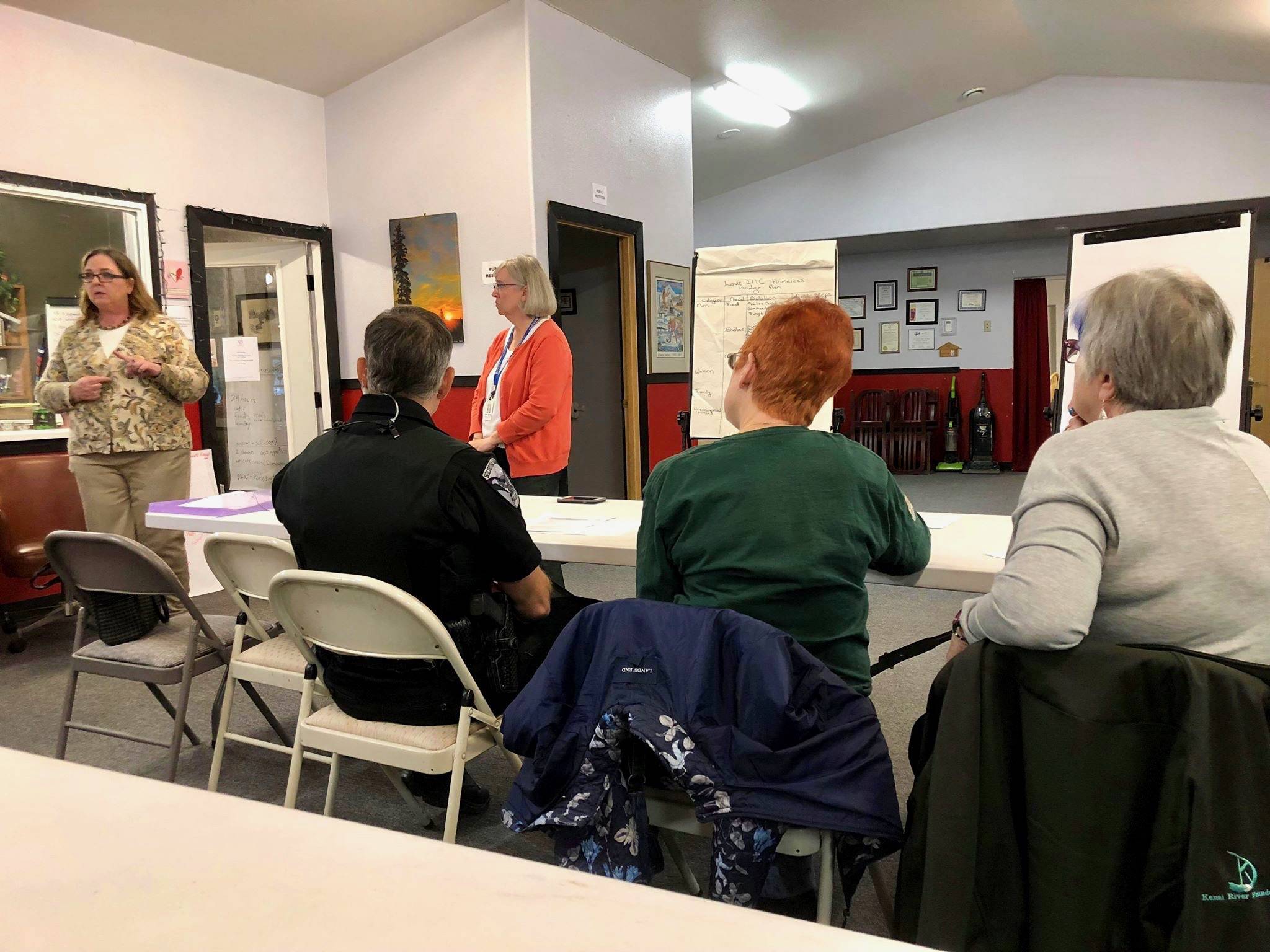On Thursday afternoon, community members from around the central peninsula gathered to discuss issues on homelessness in the area.
Concerned community member Kathy Gensel and Love INC director Leslie Rohr led the meeting. The goal of the meeting was to explore opportunities in setting up or building a homeless shelter in the community.
The Kenai Peninsula Borough School District’s Students in Transition program coordinator, Kelly King, was also in attendance. Both King and Rohr said at the meeting there has been a rise in homelessness in the area.
As of Wednesday, King said 110 students have been enrolled in the district’s Students in Transition program. More students will continue to enroll in the program throughout the year. King said she helps serve about 250 students per school year.
Rohr told the group 348 homeless people walked through Love INC’s doors in 2017, and that the organization is seeing a 10 to 15 percent increase of homeless visitors year after year. She said the majority of the people visiting Love INC are from Alaska and the peninsula.
Data from the 2018 Project Homeless Connect report show that 119 clients of the Kenai Project Homeless Connect Sub-committee were experiencing homelessness.
In the Kenai Peninsula Borough, an individual needs to earn a $20.81 hourly wage to be able to afford a two bedroom home, costing the 2018 average rent of $1,082, according to the 2018 Out of Reach report from the National Low Income Housing Coalition. The average renter in 2018, in the borough, earns an estimated $14.98 per hour, according to the same Out of Reach report. The report states nearly a third of the peninsula households are rented out.
There are no homeless shelters on the Kenai Peninsula, but there are eight emergency and transitional housing organizations, including the LeeShore Center, Transitional Living Center (LeeShore), Alpha House, Freedom House, Calvary Life Fellowship, Friendship Mission, Nuk’it’un and Diamond Willow Transitional Living.
On the southern peninsula, the only emergency or transitional housing organization is the Haven House.
Those suffering from homelessness in the area may find it hard to find housing for various reasons. Many landlords refuse to rent to those with a felony background and the waiting list for housing assistance at Alaska Housing Finance Corporation, and other organizations offering assistance can be over a year long, according to the Community Resource Assessment Report by the Kenai Peninsula Reentry Coalition.
There are many reasons a person or a family could become homeless. King reminded the group that homelessness doesn’t just affect those with chronic addictions or those suffering from mental health illnesses.
“More people don’t want to admit it, but they are one paycheck away from having the bottom fall out of their financial situation,” King said. “There’s a large list of reasons why people become homeless.”
During the meeting, members of the group wanted to focus on what demographic was the most susceptible. Many people at the meeting expressed a need for a teen or youth shelter, specifically.
“How do we decide what we’re going to look at?” Gensel asked the group. “We’d love to be able to do it all, and if we could we would, but at some point in time we’re going to have to say, where do we start and who is the most vulnerable.”
When it comes to disasters and major emergencies, the Kenai Peninsula Borough has an Emergency Operations Plan, which is currently being updated. Dan Nelson, emergency manager for the borough attended the meeting and briefly explained the purpose of the sheltering plan.
“Basically what we do in the unlikely event of an emergency-type scenario, is we could potentially open a so-called warming shelter as sort of a temporary facility for folks,” Nelson said at the meeting. “Historically, to be brutally honest, it hasn’t happened much in this jurisdiction or other jurisdictions I’ve worked in. It’s geared toward community-based care; it’s not necessarily just for anybody that can’t access a potential shelter or warm place. All of our programs are geared toward temporary use; nothing is ever permanent in my business.”
Nelson said the borough had a database of borough or city-owned locations for such an emergency.
Creating a shelter
To create a homeless shelter in the community, the group agreed it would take an immense amount of effort, time and resources. Finding land, funding and community support is only the beginning. Members of the meeting discussed possible locations and facilities that could make an appropriate shelter, like a six-plex apartment building or perhaps even the vacant Lowe’s building in Kenai.
Faith-based organizations attended the meeting as well. Many churches in the area offer a mid-week evening meal open to the public. Representatives from various church groups expressed interest in opening their doors, one day a week, to accommodate the growing population that is looking for shelter.
“If we’re mobilized, we could have seven churches, one night a week, provide a meal and have their doors open,” Rohr said.
The group intends to meet again in an effort to offer solutions. The next meeting is to be announced, but will operate at Love INC.

